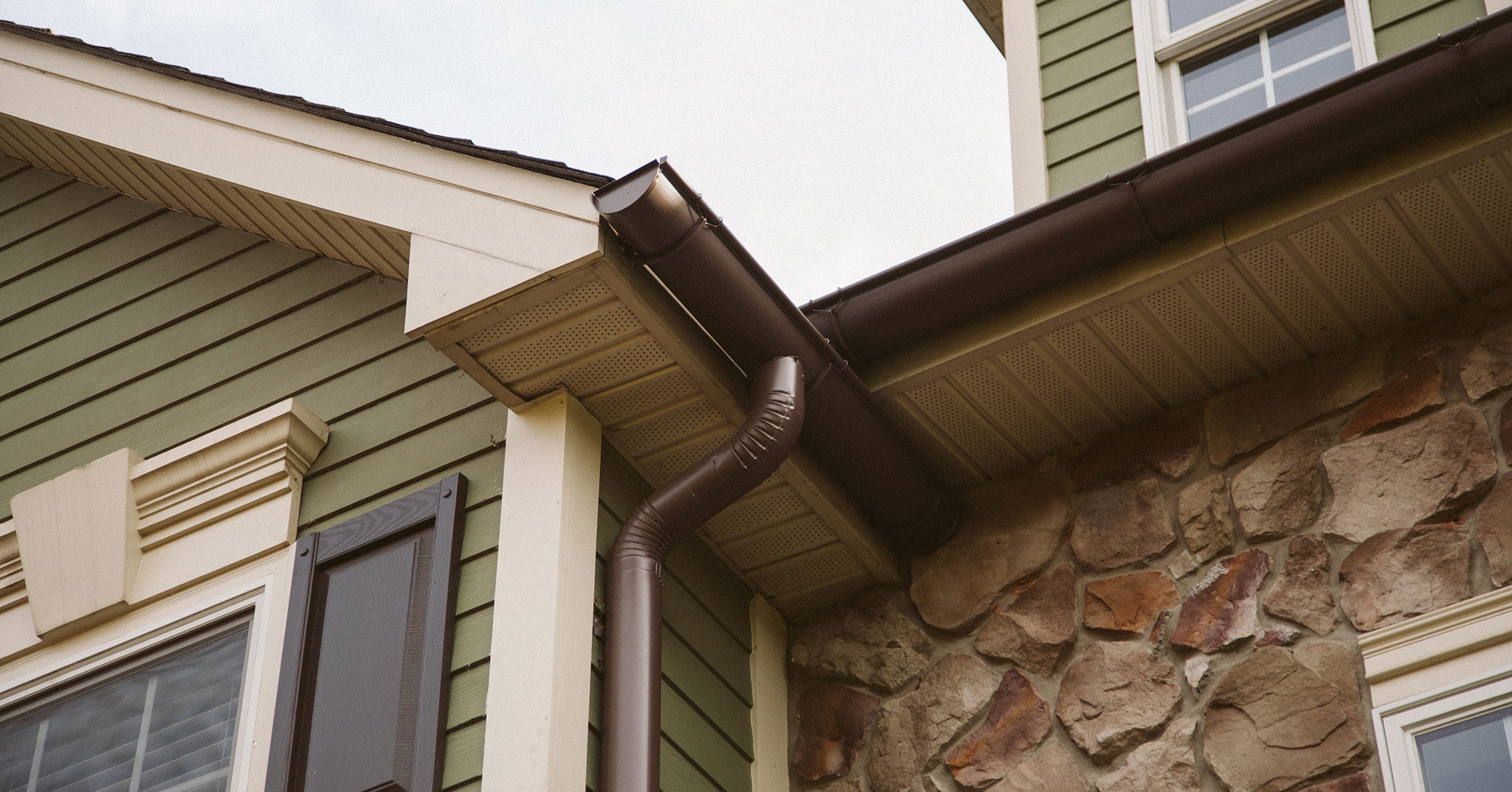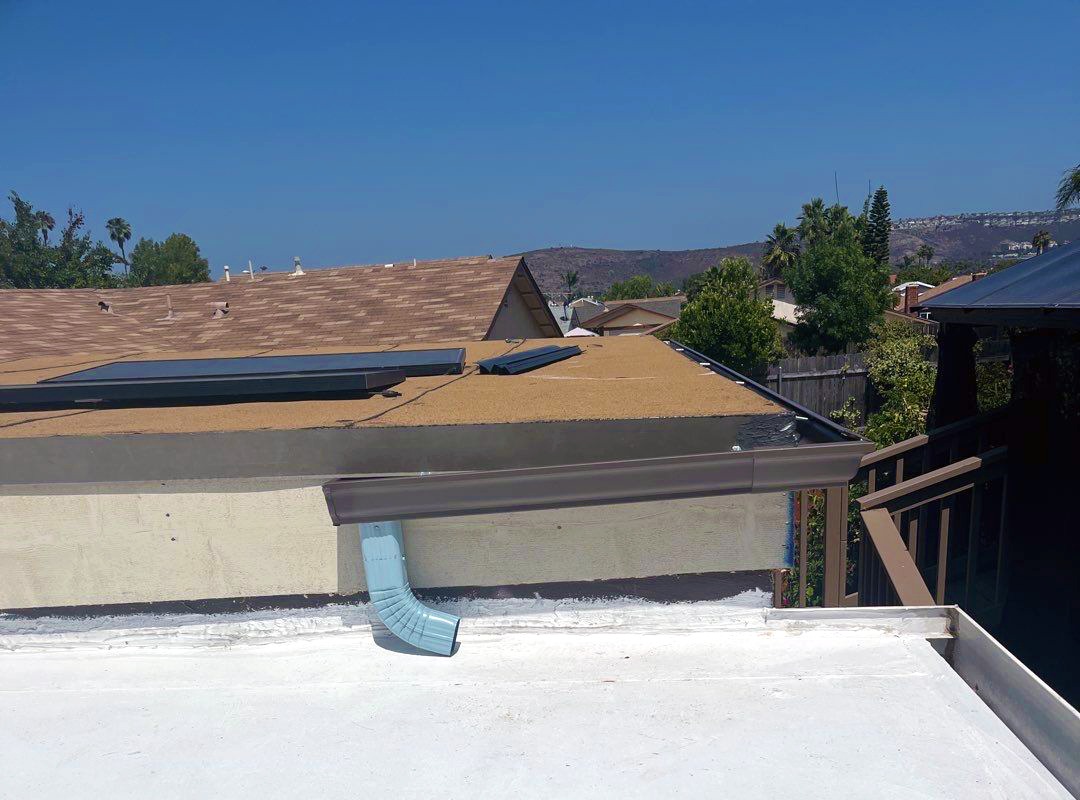When it comes to maintaining your home’s exterior, rain gutters often get overlooked. However, choosing the right rain gutters is an essential part of safeguarding your home from water damage. Gutters play a crucial role in directing rainwater away from your home, protecting the roof, foundation, and landscaping. Understanding the various types of gutters available and their respective benefits can help you make an informed decision.

The Importance of Rain Gutters for Your Home’s Roof
Rain gutters are an essential part of your roofing system. They work in tandem with your roof to channel rainwater away from the house, preventing it from pooling around the foundation. Without properly functioning gutters, water can infiltrate the roof and walls, causing costly damage over time. Gutter systems are designed to prevent soil erosion, protect the integrity of your foundation, and ensure the longevity of your roofing material.
Types of Rain Gutters to Consider
There are several types of rain gutters available, each with its unique features and benefits. When choosing gutters, it’s important to consider factors like durability, aesthetics, and the specific needs of your home.
One popular option is seamless gutters. As the name suggests, seamless gutters are custom-fit to your home, with no seams to trap debris or cause leaks. These gutters are ideal for homeowners looking for a low-maintenance solution that offers long-lasting durability.
Another common choice is sectional gutters. These gutters come in pre-formed sections that are assembled on-site. While they may require more maintenance than seamless gutters, sectional gutters can be a more affordable option for homeowners on a budget.
For those seeking a more stylish and traditional look, half-round gutters are a great option. These gutters have a curved shape that adds charm and elegance to a home’s exterior. They are often made from materials like copper or aluminum, making them both durable and aesthetically pleasing.
K-style gutters are another popular choice, featuring a flat bottom and a decorative front that resembles the shape of a crown molding. These gutters can be a great addition to modern homes and offer a high capacity for carrying water.
Choosing the Right Material for Your Gutters
Gutters come in a variety of materials, and the choice of material is crucial for ensuring the longevity and performance of the system. The most common gutter materials include:
Aluminum: Lightweight, resistant to rust, and relatively easy to maintain, aluminum gutters are a popular choice. They come in various colors and can be painted to match the home’s exterior.
Copper: Known for its aesthetic appeal and long lifespan, copper gutters are an excellent option for those who want a premium finish. They develop a beautiful patina over time, adding character to your home.
Steel: Steel gutters are durable and resistant to the elements. They are especially suitable for homes in areas with harsh weather conditions. However, they may require more maintenance to prevent rusting.
Vinyl: Vinyl gutters are affordable, lightweight, and easy to install. However, they may not be as durable as other materials, especially in areas with extreme temperatures.
Each material has its pros and cons, and your choice will depend on your climate, budget, and aesthetic preferences.
Sizing Your Gutters
Proper gutter sizing is critical to ensure that they can handle the volume of water that flows from your roof. Gutters are typically available in two sizes: 5-inch and 6-inch. The 5-inch gutters are ideal for homes with smaller roofs, while 6-inch gutters are better suited for larger roofs or areas that experience heavy rainfall.
It’s important to note that the size of your gutters should match the size of your downspouts as well. Downspouts are responsible for carrying water from the gutters down to the ground, and the two systems need to work together efficiently. A professional roofing contractor can help determine the appropriate size for your gutters based on your home’s roof size and local weather conditions.
Gutter Guards: Are They Worth It?
One of the most common issues with gutters is the accumulation of leaves, twigs, and other debris. This debris can block the gutters, leading to water overflow and potential damage to your home. Gutter guards can help prevent this buildup by filtering out debris while still allowing water to flow freely.
While gutter guards are not necessary for every home, they can be a valuable investment for homeowners who want to reduce maintenance and prevent clogs. They come in various types, such as mesh, foam, and reverse-curve designs, and can be installed on top of existing gutters.

Professional Installation vs. DIY
While some homeowners may attempt to install their own gutters, professional installation is often recommended for the best results. Professional installers have the experience and tools to ensure that the gutters are properly sized, aligned, and securely fastened to your home. They can also provide advice on the best gutter system for your home’s specific needs.
If you choose to go the DIY route, be sure to follow manufacturer instructions carefully and take safety precautions when working on a ladder. Incorrect installation can lead to leaks, poor water flow, and other issues that may require costly repairs.
